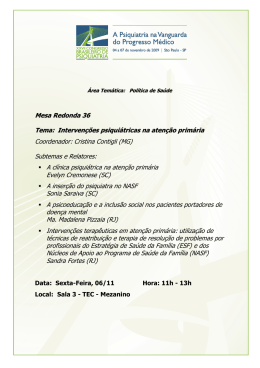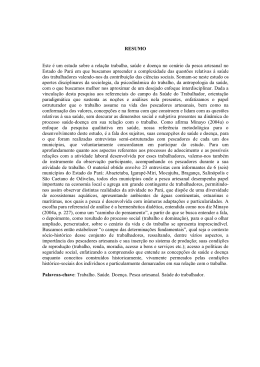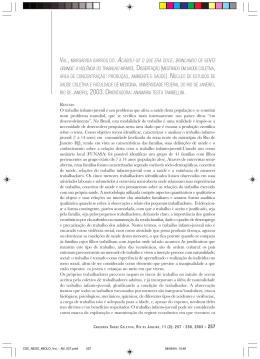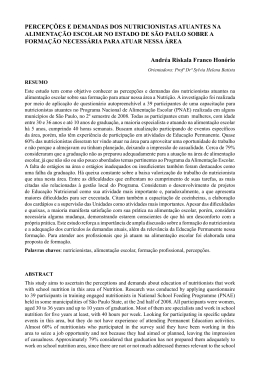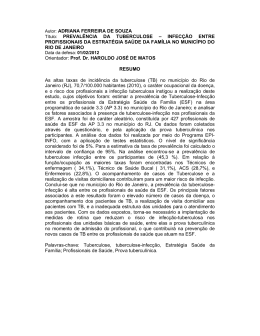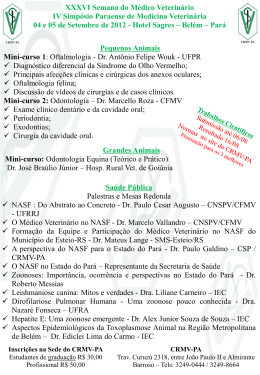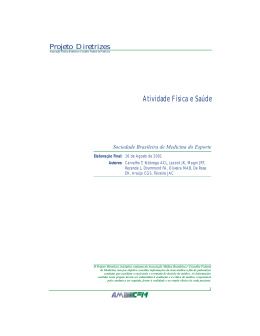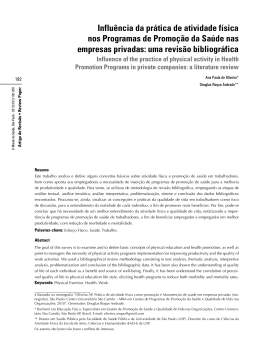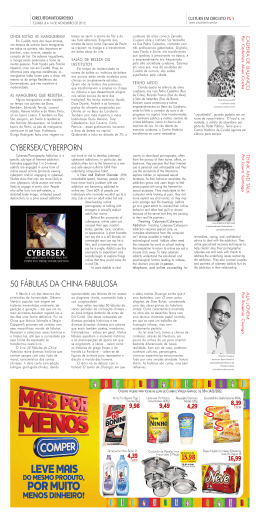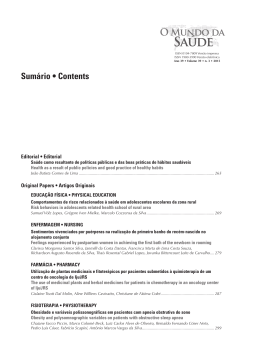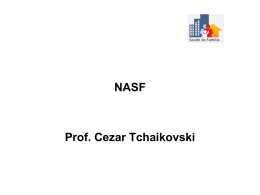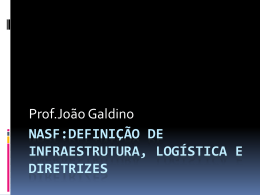Autor: DANIEL MARTINS CANDIDO DA SILVA Título: PERCEPÇÕES DOS EDUCADORES FÍSICOS SOBRE SUA ATUAÇÃO NO NASF NO MUNICÍPIO DE SÃO PAULO: UM TRABALHO MUITO ALÉM DA MALHAÇÃO Data da defesa: 21/02/2014 Orientador: Profª Drª Luciana Maria Borges da Matta Souza RESUMO A educação física foi incluída no campo da saúde há pouco mais de 20 anos e integra a Atenção Básica (AB) no Brasil através do Núcleo de Apoio à Saúde da Família (NASF) desde 2008. O núcleo conta com uma equipe multiprofissional e tem como objetivo apoiar a estratégia Saúde da Família, aumentando assim, sua resolubilidade. Este estudo teve como objetivo analisar o trabalho do educador físico que atua no NASF do município de São Paulo, através da percepção de suas ações, identificando se os documentos que normatizam a sua atuação são conhecidos e utilizados por ele e avaliando as potencialidades e fragilidades da sua inserção na AB. Para tal, foi realizada uma pesquisa qualitativa de caráter exploratório com entrevistas semiestruturadas, que foram trabalhadas à luz da Análise de Conteúdo, pela modalidade Análise Temática. Ao todo, foram entrevistados 23 educadores físicos graduados há pelo menos três anos e que trabalhavam em NASFs do município de São Paulo há pelo menos um ano, de um total de 41 profissionais que preenchiam os critérios de inclusão, correspondendo a cerca de 56% do total. Como resultado, foi observado que suas ações estão ligadas principalmente, a atuação direta com a população, através de atividades individuais ou compartilhadas. O matriciamento da equipe, embora valorizado e preconizado pelo Ministério da Saúde, possui lugar secundário nas suas funções. Percebemos também que o educador físico tem contato com os documentos e procura utiliza-los, à medida do possível, embora tenha pouco tempo para fazê-lo no seu cotidiano, visto que são responsáveis por seis a quinze equipes de saúde da família, dependendo da região. Ele se percebe como profissional da saúde e entende que seu trabalho é fundamental para a população adscrita ao território, por ser um elemento integrador e articulador com os outros profissionais que compõe a equipe. Como potencialidade, identificamos as vantagens do trabalho multiprofissional e o reconhecimento de sua atuação pela população. Quanto às dificuldades, ficam claros os problemas com relação a espaço físico restrito para atuação, a falta de materiais de apoio ao seu trabalho e a confusão sobre sua real função no NASF, pois ele não sabe se tem que estar diretamente com o público ou se tem que ampliar a sua atuação através do matriciamento da equipe, para que a mesma ganhe autonomia necessária ao movimento pró-atividade física no território de sua responsabilidade. Ao final desta pesquisa, esperamos oferecer elementos aos educadores físicos para melhorar sua forma de atuação no NASF. Palavras-chave: Educação Física; Capacitação em Serviço; Atenção Básica; Saúde da Família; Equipe Interdisciplinar de Saúde. ABSTRACT Physical education has been included in the health field for over 20 years and has become part of the Primary Care: AB (Atenção Basica) in Brazil provided through the Support Center for Family Health: NASF (Núcleo de Apoio à Saúde da Família) since 2008. The program has a multidisciplinary team and aims to support the Family Health Strategy, thus increasing its efficiency and effectiveness. This study’s purpose was to analyze the work of physical educators whilst working with NASF in São Paulo, by observing their actions; identifying whether the documents that regulate their activity are known and used; and by evaluating the strengths and weaknesses of their inclusion in AB. To this end an objective survey, with semi-structured interviews, was carried out in the light of Content Analysis, by means of Thematic Analysis. Overall, 23 physical education graduates who: had over three years work experience; and who worked in NASFs of São Paulo for at least one year were interviewed. A total number of 41 professionals met the inclusion criteria, corresponding to about 56 % of total body of working professionals. As a result, it was observed that their actions are mainly related to direct work with the population, through individual or shared activities. The Core Team (responsible for compiling and disseminating knowledge to other professionals) although valued and recommended by the Ministry of Health, has secondary function. We observed that whilst the physical educator is in contact with proper standard health documentation and even employs this as much as possible, he/she has little time to do it in their daily lives, as they are responsible for six to fifteen Family Health Teams, depending on the region. They are perceived as health professionals and understand their job is basic to the registered population in the area, acting as integrators and articulators with other professionals who make up the team. We are able to identify the advantages of this multidisciplinary work and it’s great potential as well as the recognition of this work by the population. As for the difficulties, the problems are clearly identified: restricted physical space to operate, lack of materials to support their work and general confusion regarding ones actual function within NASF, because the professionals are unsure whether they have to interact directly with the public or whether they must expand operations and act through the Core Team to win the same autonomy required to bolster physical pro-activity in the territory of their responsibility. At the end of this research, we hope to provide elements so that physical educators may improve the way they operate within NASF. Keywords: Physical Education; Inservice Training; Primary Care; Family Health; Interdisciplinary Health Team.
Download
